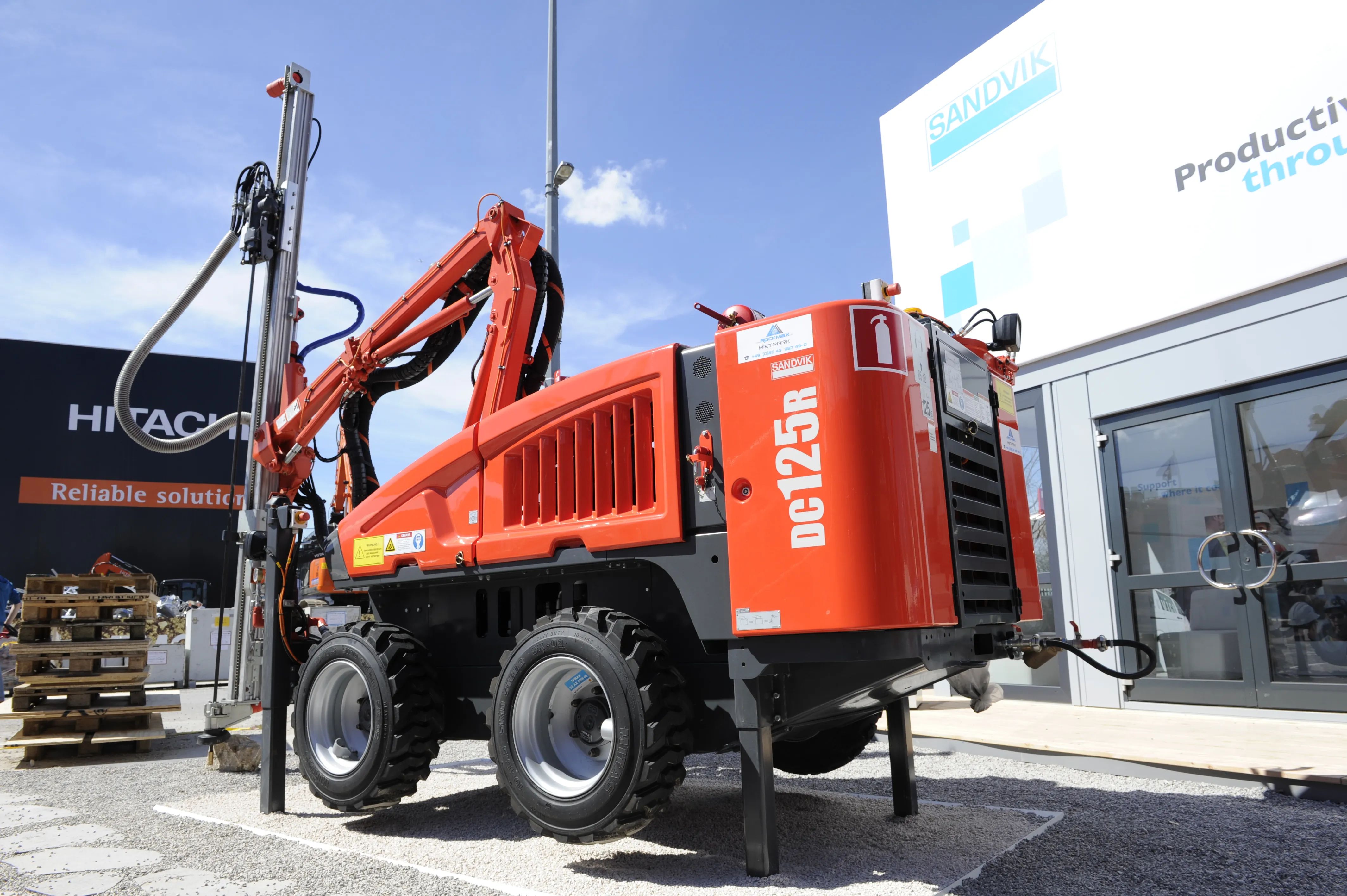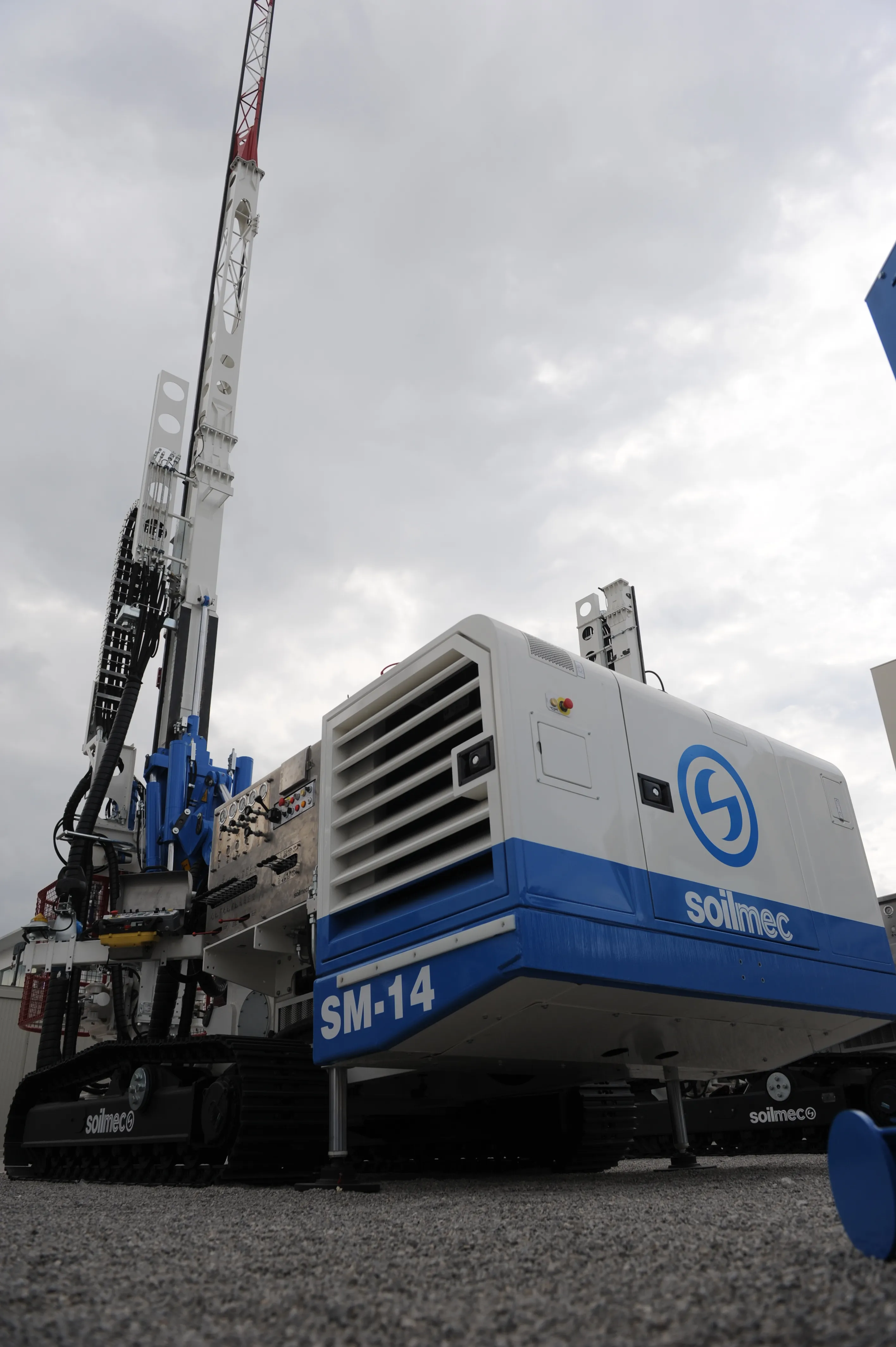Sandvik Construction has added the DC125R to its DC family of compact top hammer drill rigs. The remote-controlled self-propelled rig has a four-wheeled carrier that can also be equipped with rubber tracks for added mobility in difficult terrain. Capable of drilling 22-45mm diameter holes, the machine is capable of up to 300-400m3 in an eight-hour shift. The 3,150kg mini rig is powered by a 37kW engine that drives a 5.5kW rock drill. Designed primarily for foundation drilling, road cutting, trenching, line
January 6, 2017
Read time: 1 min

The remote-controlled self-propelled rig has a four-wheeled carrier that can also be equipped with rubber tracks for added mobility in difficult terrain. Capable of drilling 22-45mm diameter holes, the machine is capable of up to 300-400m3 in an eight-hour shift.
The 3,150kg mini rig is powered by a 37kW engine that drives a 5.5kW rock drill. Designed primarily for foundation drilling, road cutting, trenching, line drilling and bolting, the DC125R is said to offer improved manoeuvrability, allowing it to access confined sites. The refreshed design incorporates a new cooling system, with an externally mounted silencer to keep heat outside the engine compartment.
Stand: F6.616/1
%$Linker:







